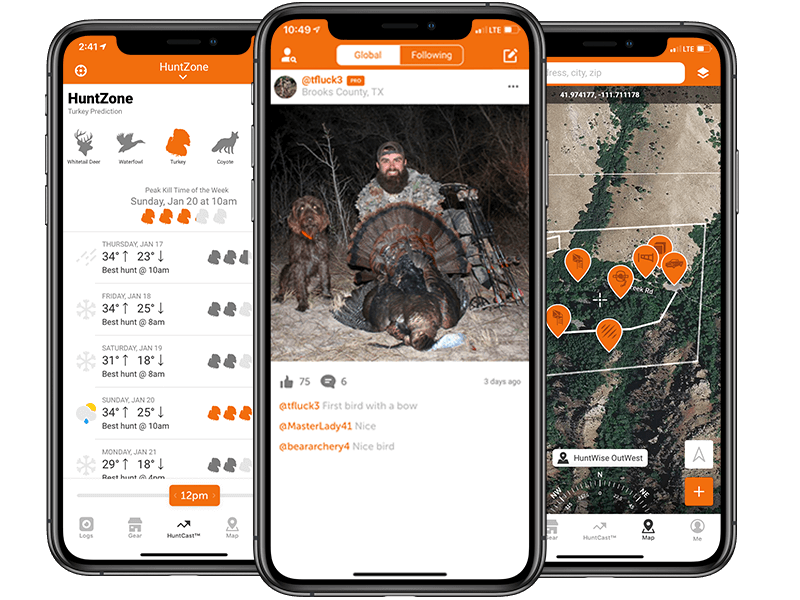Domestic, or wild turkey are native to the forests of North America. In recent years the population of turkeys had been steadily declining, but thanks to large conservation efforts, the turkey population in America is flourishing once again. Due to their increasing numbers, turkeys are now one of the most hunted game in North America. These smart birds have learned how to adapt to their ever-changing environments and continue to find ways to survive despite shrinking habitats.
Variables to Consider When Hunting Turkey
Location: Wild turkeys tend to nest in largely forested areas, however, due to large de-forestation over the last several decades, they've also learned to adapt and thrive in environments with very little wooded area. Some of the best states to hunt wild Turkey include New York, Wisconsin, Alabama, Missouri and Pennsylvania.
Solunar Calendar: According to a theory laid out by John Alden Knight in 1926, animal movement is affected by the position and fullness of the moon. This theory was said to be used by hunters and fishermen long before Knight’s theory was published and is still widely accepted and adopted today.
Time of Year: Wild Turkey activity changes according to the time of year. The best time of year to hunt Turkey will also depend largely on what state you're hunting in, but generally falls between early spring and mid-to-late fall.
Time of Day: Since Turkeys make their nest in trees and on the ground in wooded areas, one of the best times of day to hunt is first thing in the morning. Get out to your blind early and listen for the yelps, cackles, and gobbles of turkeys as they start in search for breakfast.
Temperature: Temperature can play a role on the noise-level of wild turkeys. Because turkeys are most active during times of mild weather, it's been estimated that they are the most vocal in temperatures of 60-69 degrees Fahrenheit. Much like humans, too hot or too cold and their activity slows down.
Barometric Pressure: The average barometric pressure also affects gobbling activity. Higher pressure is often associated with higher vocal activity from the birds. According to research, turkeys are most active at 29.9 to 30.2 inches.
General Weather Conditions: As a general rule of thumb, turkeys are most active during calm, clear days in morning and early afternoon hours. Turkey activity generally decreases with bad weather conditions including wind and rain. During extremely wet and rainy days, turkeys are neither vocal nor very active.
Wind: Much like rainy days, turkeys tend to be quieter during days of moderate to strong wind conditions. Strong winds can also hinder hunter's ability to hear wild turkeys even if they are on the move.
Want To Find The Best Hunting Times For Turkey?
Technology is often to blame for keeping people isolated and cooped up indoors. At Sportsman Tracker, we aim to provide digital tools that get our users off the couch and into the great outdoors. As the digital backbone to the hunting and fishing industry, Sportsman Tracker is dedicated to creating great hunting experiences for sportsmen across the country.
States Where You Can Hunt Turkey
Turkey can be found and hunted in all of the following states: Alabama, Arizona, Arkansas, California, Colorado, Connecticut, Delaware, Florida, Georgia, Idaho, Illinois, Indiana, Iowa, Kansas, Louisiana, Maine, Maryland, Massachusetts, Michigan, Minnesota, Mississippi, Missouri, Montana, Nebraska, Nevada, New Hampshire,New Jersey, New Mexico, New York, North Carolina, North Dakota, Ohio, Oklahoma, Oregon, Pennsylvania, Rhode Island, South Carolina, South Dakota, Tennessee, Texas, Utah, Vermont, Virginia, Washington, West Virginia, Wisconsin and Wyoming.










